How to be Colour-Confident in Your Home

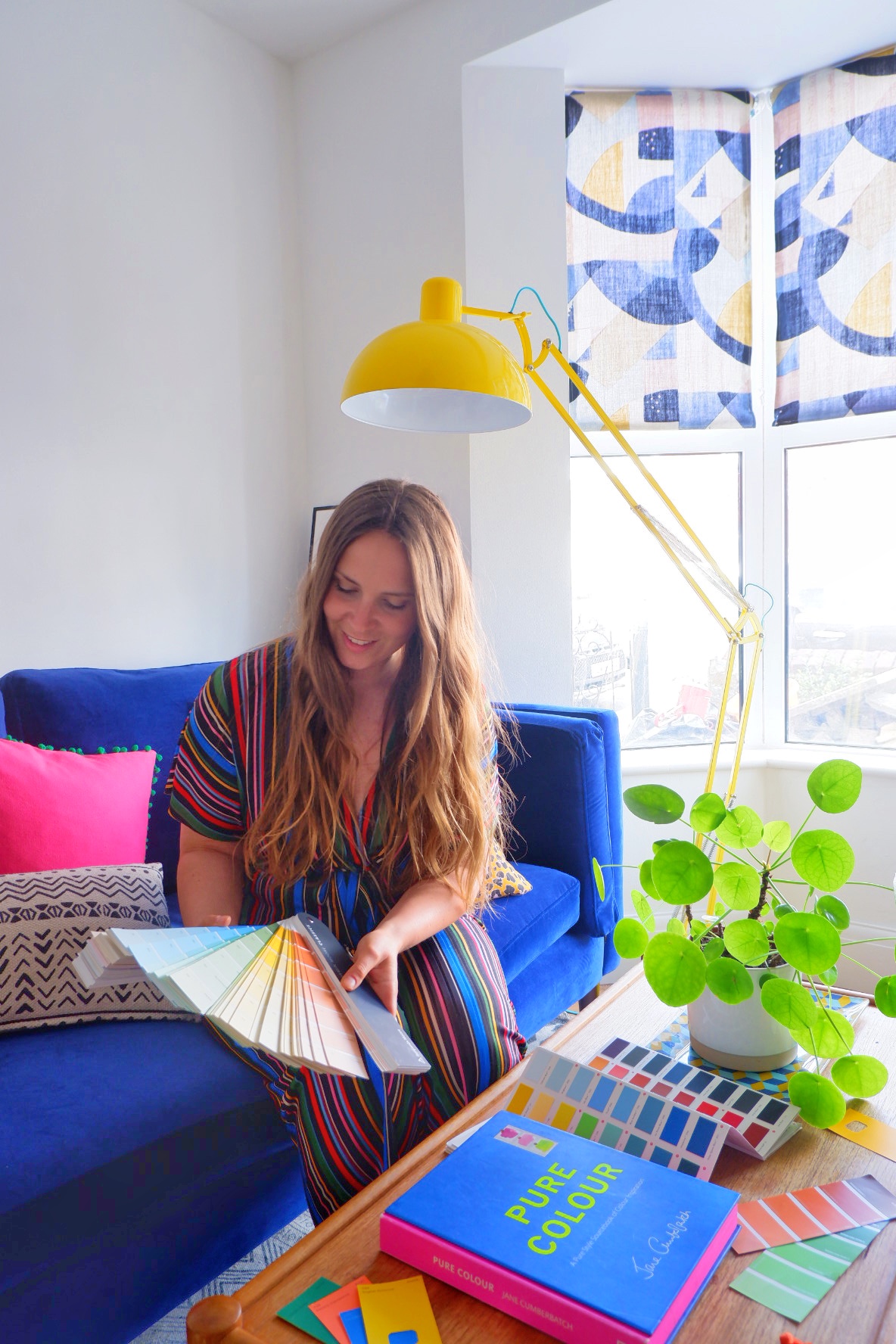
Choosing the right colours for your home decor can be a little daunting, especially if you’re still learning what colours work well together. That’s why I want to share my top-tips on how to be colour-confident in your home, and what steps to take before and during the design process of a room.
*This post has been sponsored by Sofa Workshop
Last year in August we moved in to our new house and I could finally let my inner colour-lover off leash and experiment with my own style in my own home. A blank canvas is all I had ever wanted, and I finally had it! I do however have the upper hand of working as an interior stylist, so designing a room comes a little more naturally to me. Colour can be a tricky one to conquer, and can understandably be a little overwhelming to those who aren’t confident in knowing what colours compliment another. If this is something you are struggling with then don’t fret, I’m here to help you with some handy tips on how to understand colour, and determine what colours are right for the room you are designing.
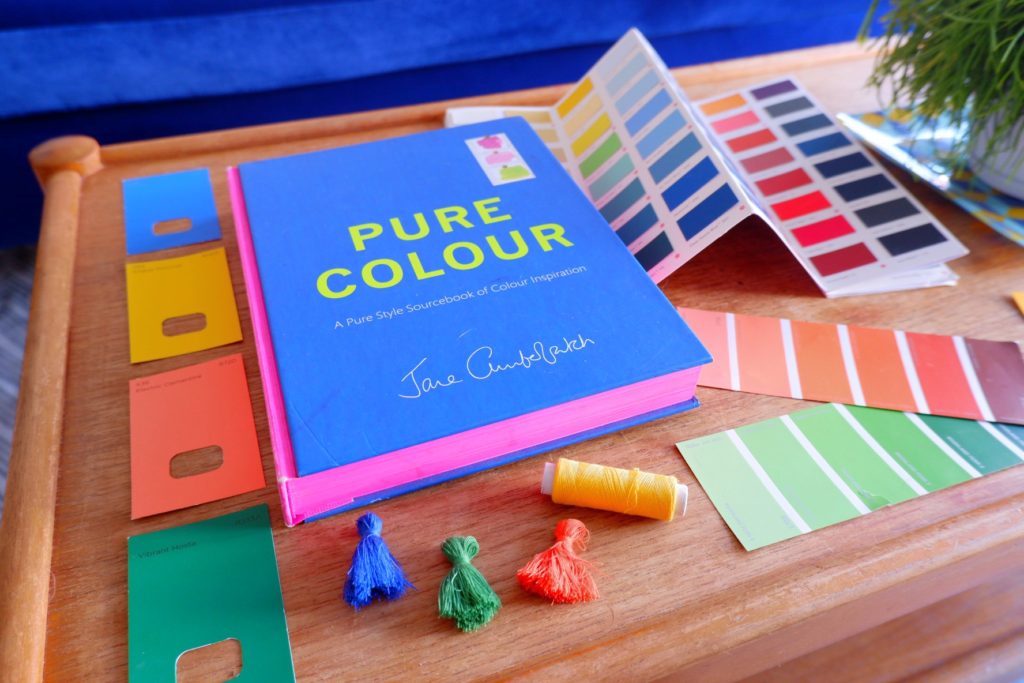
How to be colour-confident in your home…
I’ve broken it down in to 4 simple steps. To help explain it to you, I’m going to take you on a tour around my living room so you can understand my thought process behind the design, and how I became confident that the colours would work well together. These 4 steps will help teach you how to be more colour-confident in your home…
1. Make a Mood Board
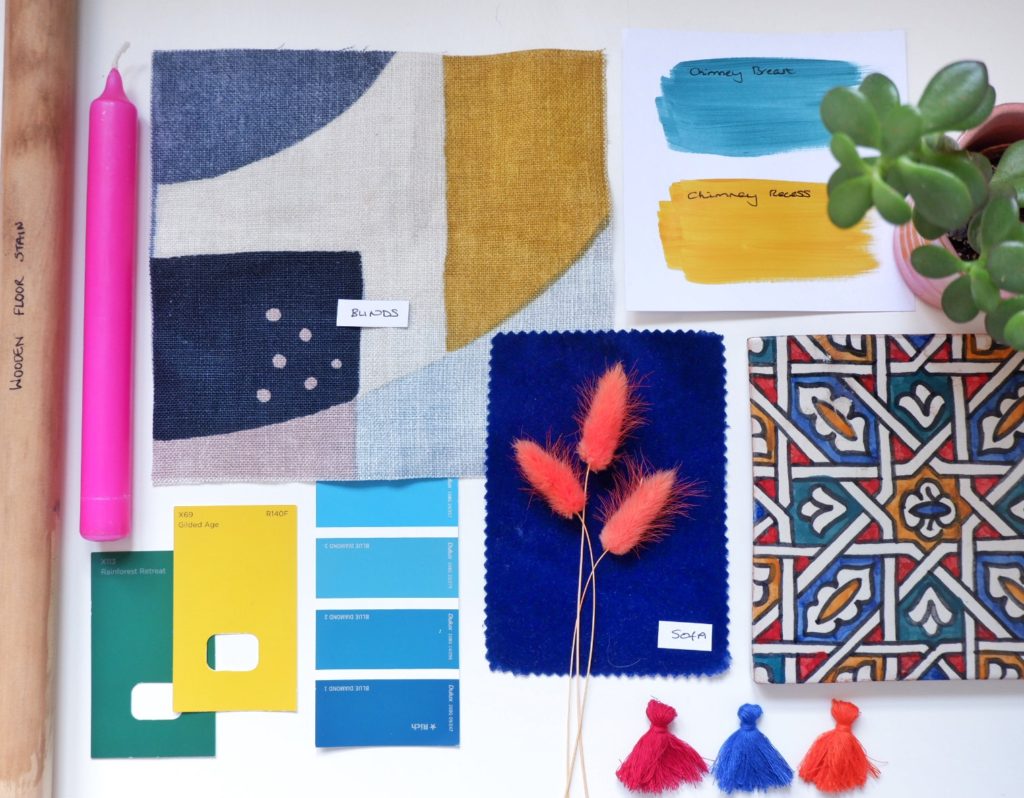
This is undoubtedly the most important stage of designing a room and it should never be overlooked. Mood boards are a great way of visually documenting all of the ideas you have in your head. If you’re unsure about what colour sofa to buy, what colour to paint a wall, or what fabric will work best for your blind – order samples, and lots of them!
Even with years of experience, I never start a new project without creating a mood board beforehand. Not only does it help me visually understand what colours work best together, it means I can also see the textures of the materials together too. Things can also look very different in the flesh compared to a digital photo, so it will help you avoid any costly mistakes.
How to make a mood board
- Order samples of various materials you are thinking of putting in the room. Flooring, tiles, cabinetry, paint & fabrics are all good starting points.
- Display all of the materials on a large white board to keep it clean and simple.
- Mix & match the different samples until you find a combination that you love.
- Use small accessories to add depth to the mood board and use different textures to make it come to life.
- Take a clear photo of your mood board to keep referencing back to.
2. Begin with a statement piece
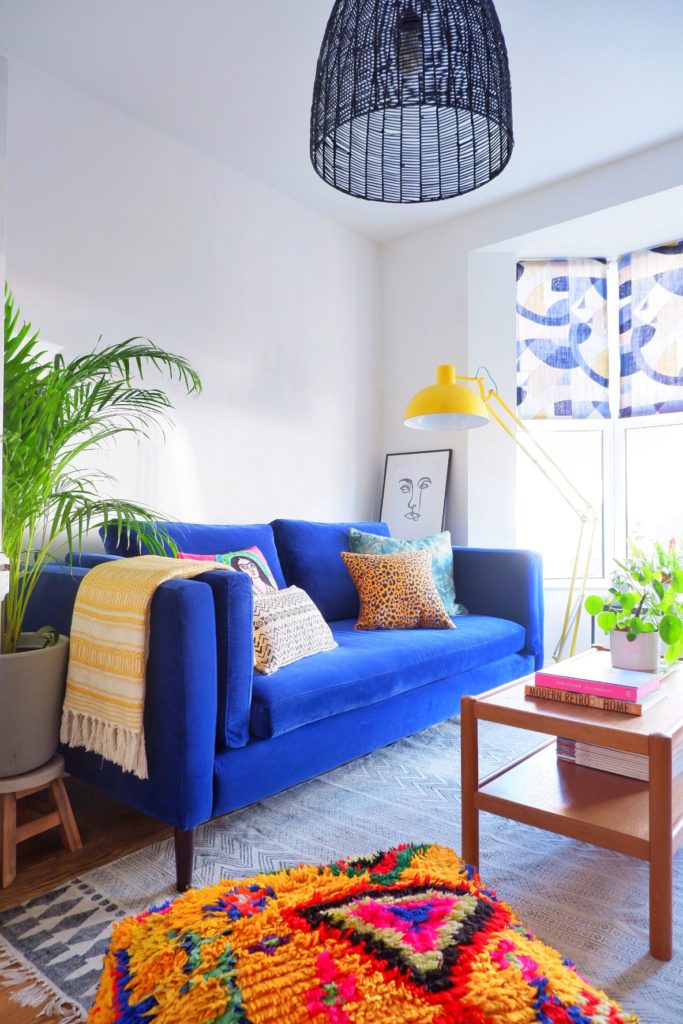
If you’re feeling stuck, and not sure where to begin, then I suggest you start with a statement piece to create focal point for the room. A sofa is a good example for a living room space for example, as that is generally the main piece of furniture in the room and something you can take pride in. I fell in love with the Eden sofa from Sofa Workshop, and I knew at first sight that it was the right sofa for me. I was deliberating between two colours, either cobalt blue or emerald green, and later decided to go for blue after receiving some samples. Sofa Workshop have over 1000 different fabrics to choose from and they offer free samples, so I was really spoilt for choice!
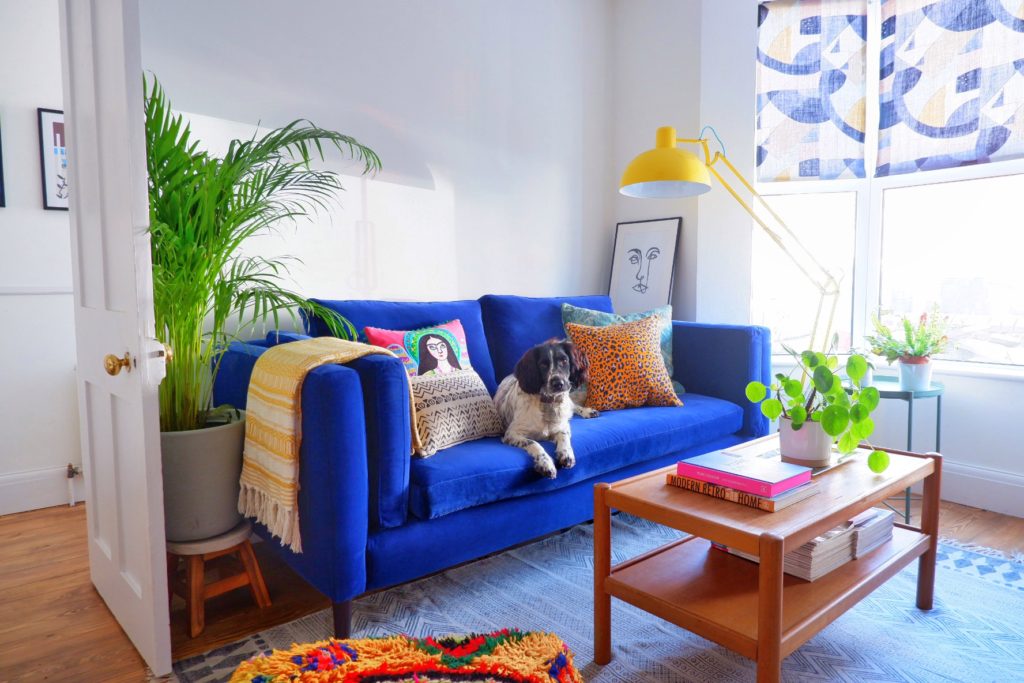
Once you’ve got a statement piece sorted for the room, you can use this as a core to help design the space around it. I used my Eden sofa as a starting point for the rest of the room, and chose complimentary colours to surround it.
What are complimentary colours?
A quick way of understanding what colours work well together is by learning the colour wheel and investing some time into researching the primary, secondary and tertiary colours. Generally speaking, colours on opposite ends of the colour wheel are known as ‘complimentary colours’. This is a good starting point for those who are new to exploring colour.
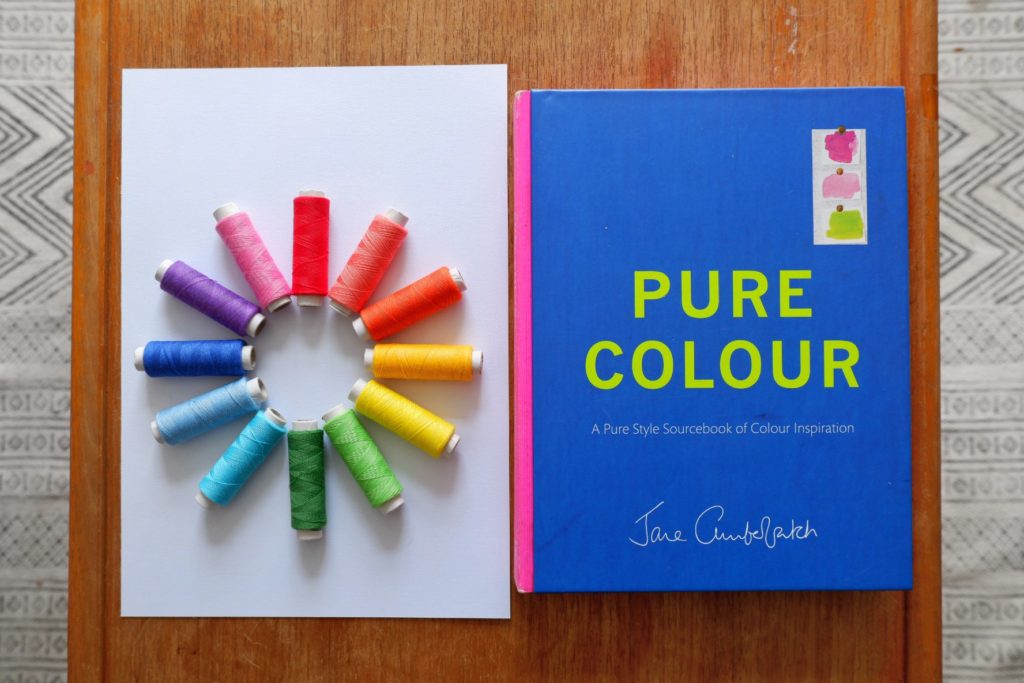
Blue and yellow are on opposite sides of the colour wheel, so my floor lamp and pouffe offset the sofa perfectly, which makes it stand out more.
3. Experiment with accessories
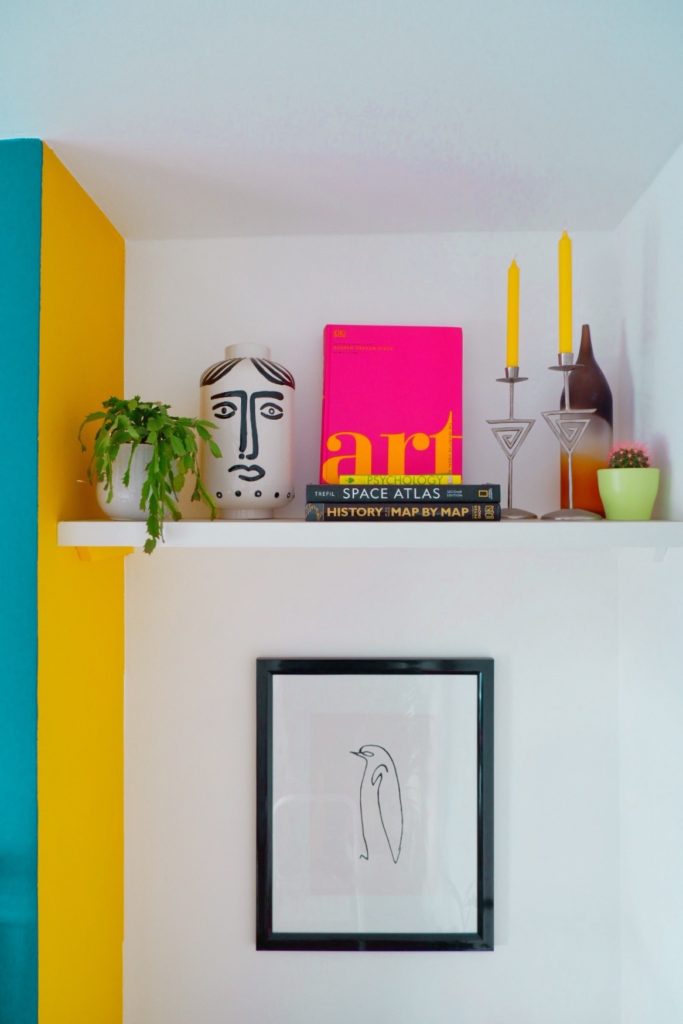
Let’s face it, no-one wants to spend hundreds of pounds on a new rug or custom-made curtains just to realise that the colour wasn’t right for the room. Smaller accessories are an inexpensive way of experimenting with different colours, and are very easy to return if not quite right.
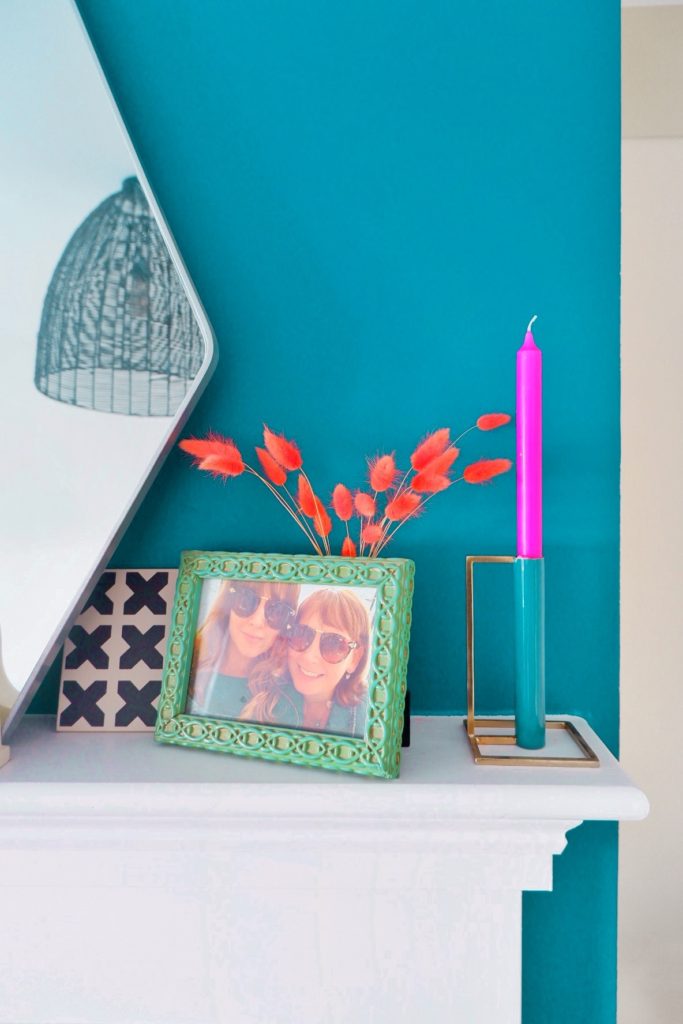
Spend time titivating with various accessories until you create a colour scheme that works for the room. Remember that colours don’t need to be too matchy-matchy as this can end up looking monotone. Instead, try clashing different colours until you find a combination that appeals to the eye.
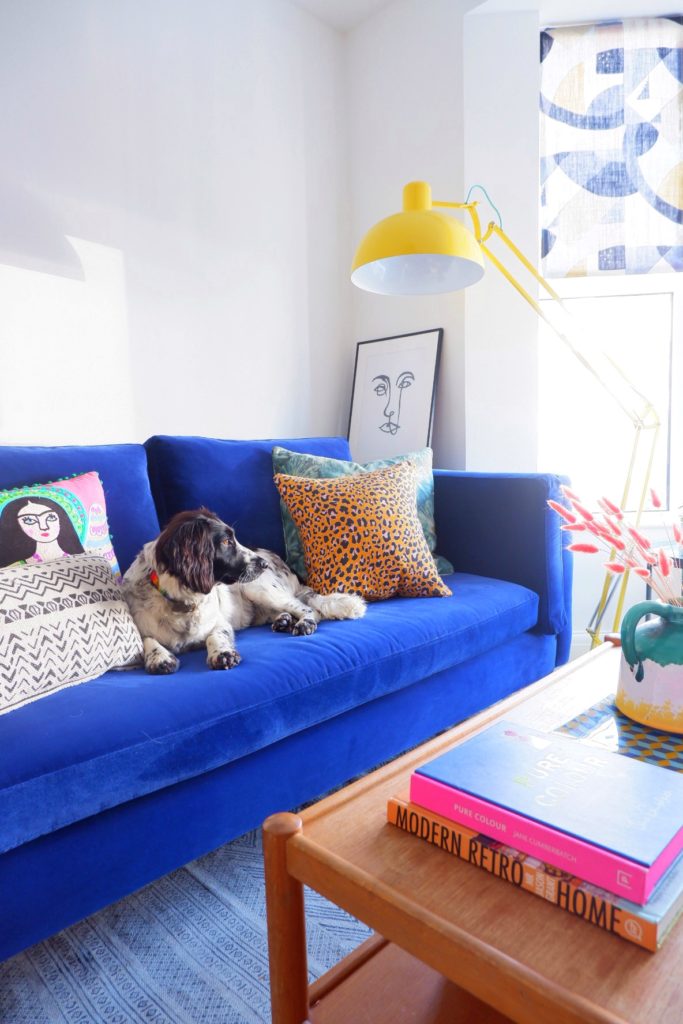
Accessories to experiment with…
- Cushions
- Throws
- Vases
- Books
- Candlesticks
- Photo frames
- Trinkets
- Trays
4. Do what makes YOU happy
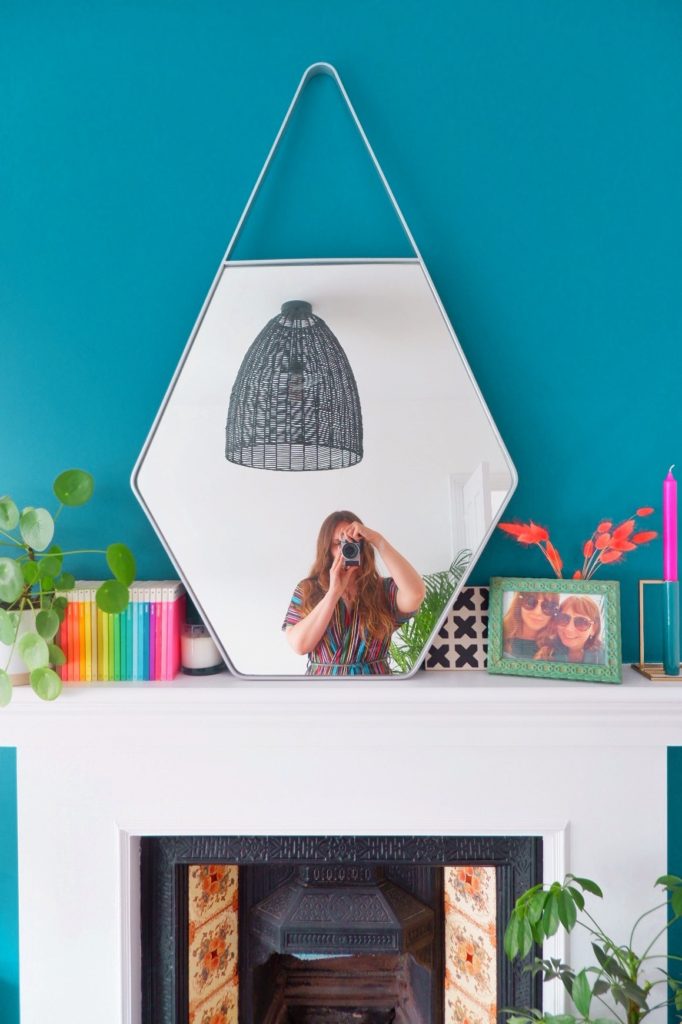
So many people get too caught up in the latest trends, and worry about what’s ‘hot’ and what’s not. The most important thing to consider when creating a colour scheme in your home is that it makes YOU happy. Everyone has different colour tastes and preferences, and that’s totally ok. So, if you’re drawn to a specific colour combination, just go for it! You need to learn what colours make you tick, and with this comes the confidence to design a room.
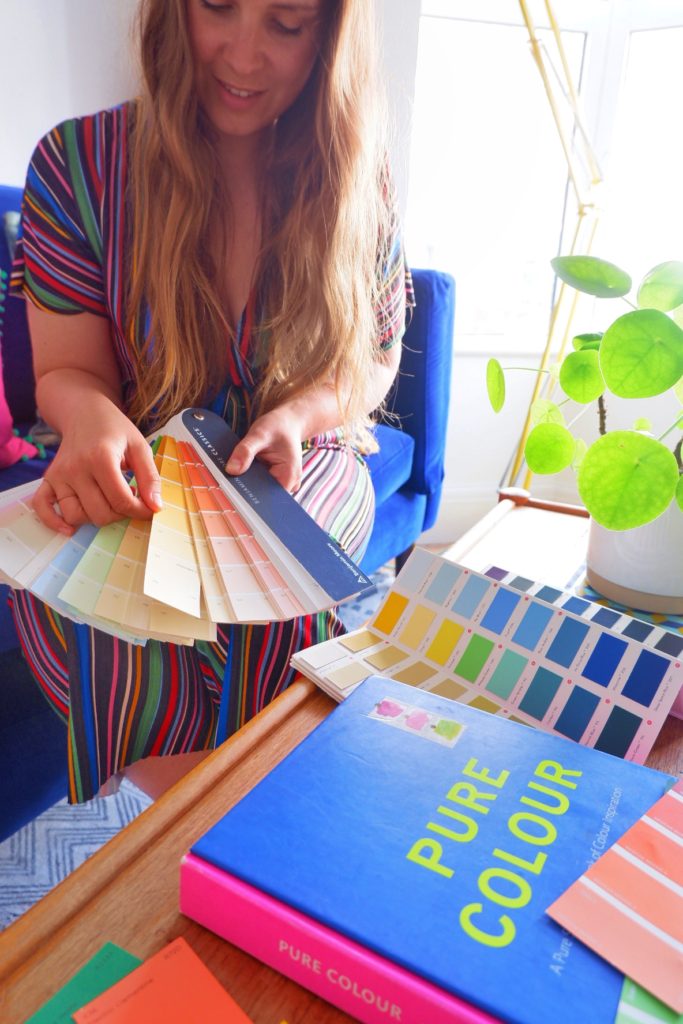
What makes me tick and why?
I’ve been a complete colour-lover for as long as I can remember. I’m always drawn to bright, vibrant tones as they often make me feel happier… You won’t find any beige in my home! I would describe my style as modern-bohemian with an eclectic twist, because I love clean and crisp shapes and funky motifs with added cultural touches to soften the look. I also have a passion for plants which you will find in every room of my house. Plants are another fantastic way of adding a good pop of colour in to a room and adding life to a dull space.
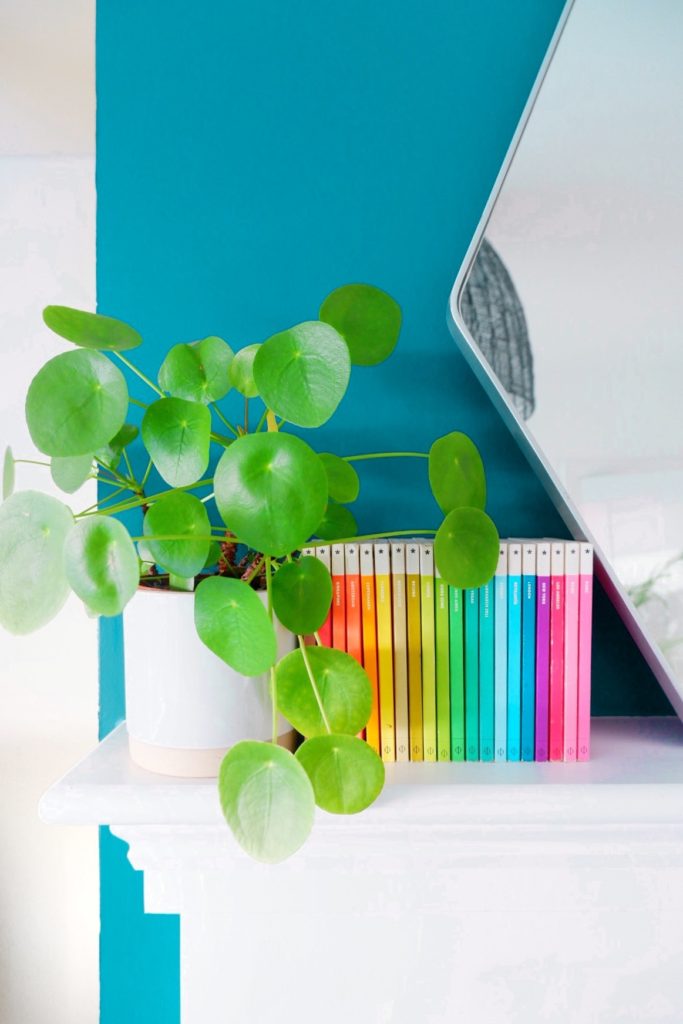
Before & After
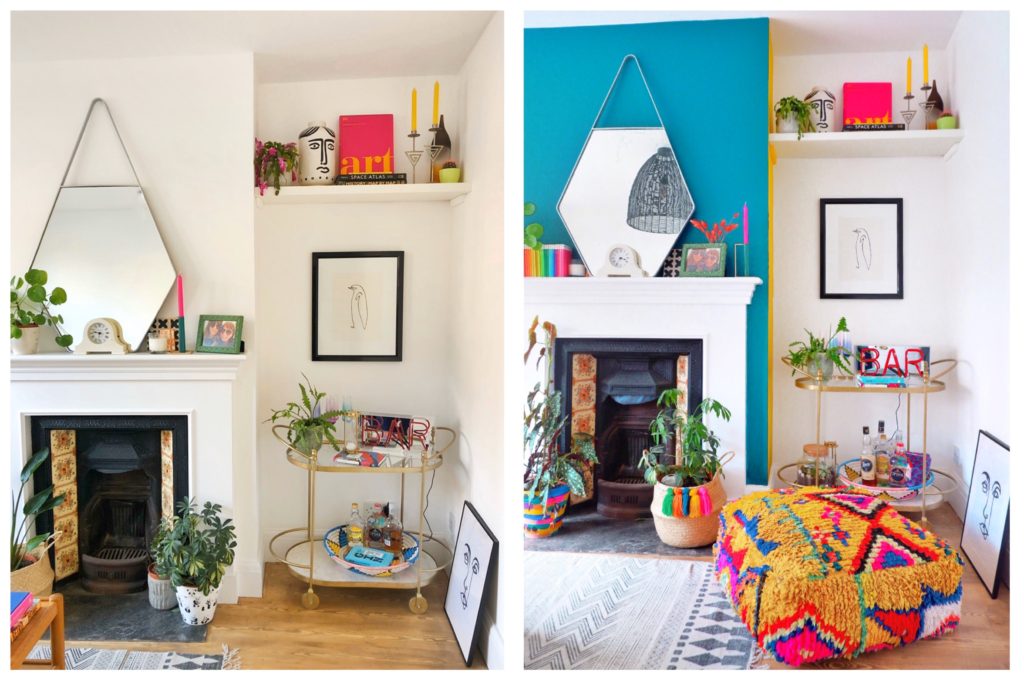
I slowly made colourful additions to my living room over the course of a few months. It’s important not to rush in to big decisions that you may later regret. If you stick to my 4 simple steps above, I can guarantee you will be colour-confident in your home. Make sure you enjoy it! It’s a process that needs research and takes time, but in the end it is extremely rewarding when you have created your own space that makes you thrive.
PIN THIS
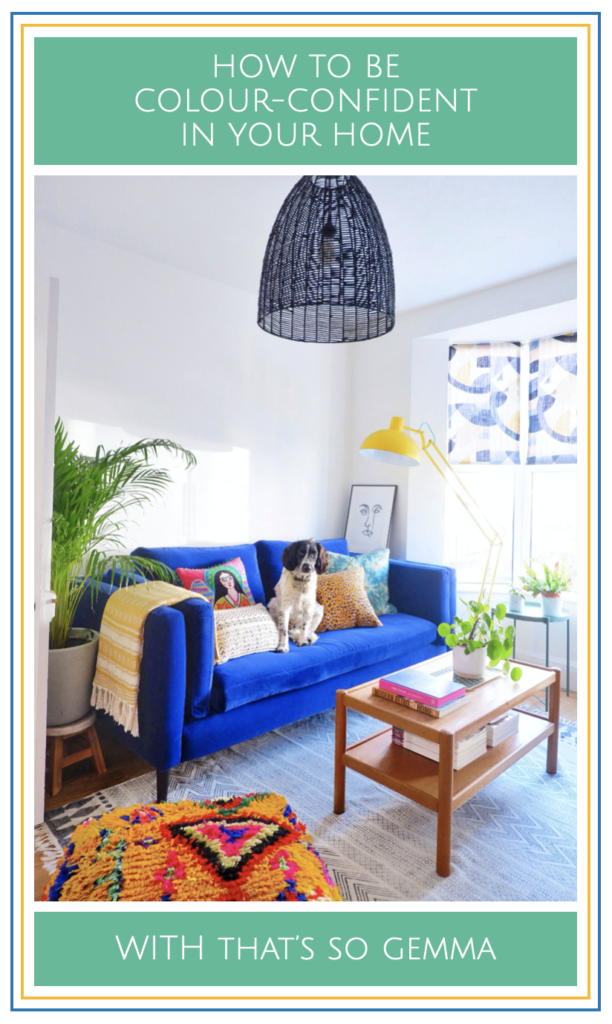
YOU MAY ALSO LIKE
Simple-but-Clever Storage Solutions for the Bedroom
How to Choose the Right Shelves for Your Home
6 Stylish Ways to Incorporate a Home Office in to Your House
This post was made in collaboration with Sofa Workshop.
All content curated by That’s so Gemma.
This post may contain affiliate links.


